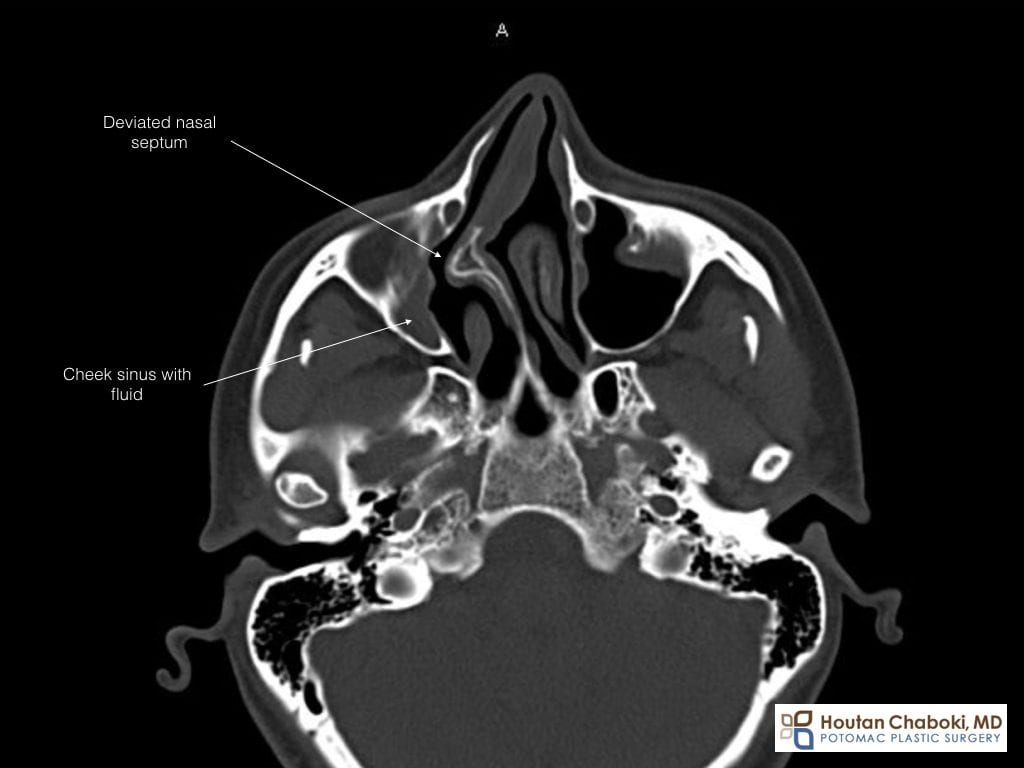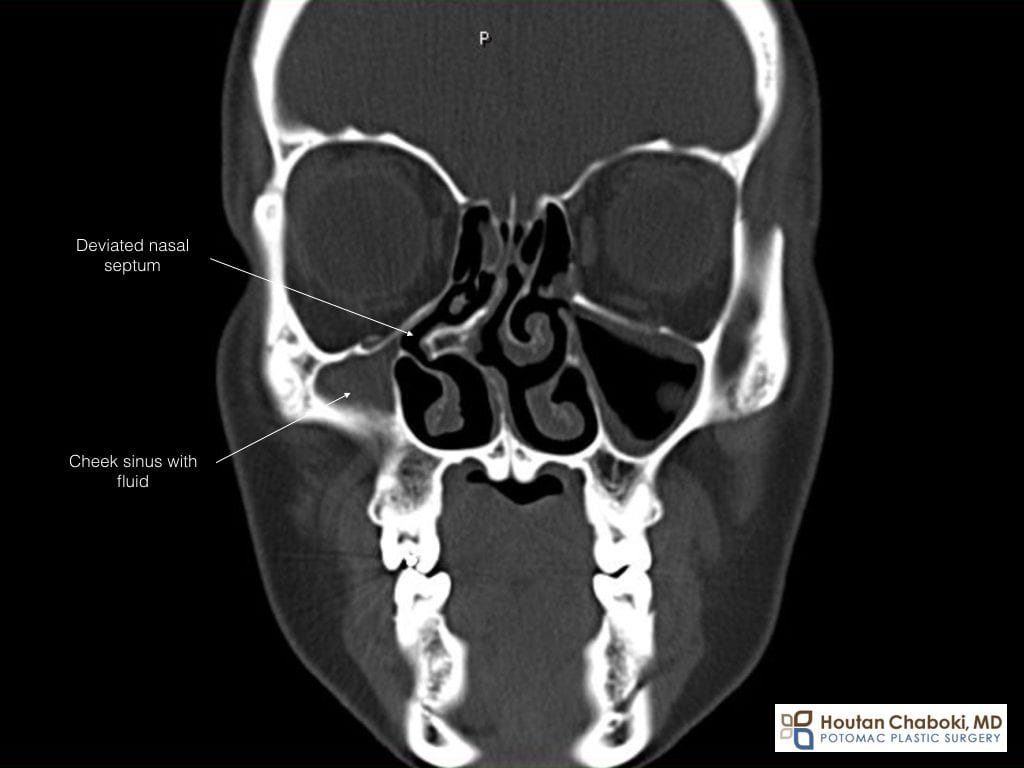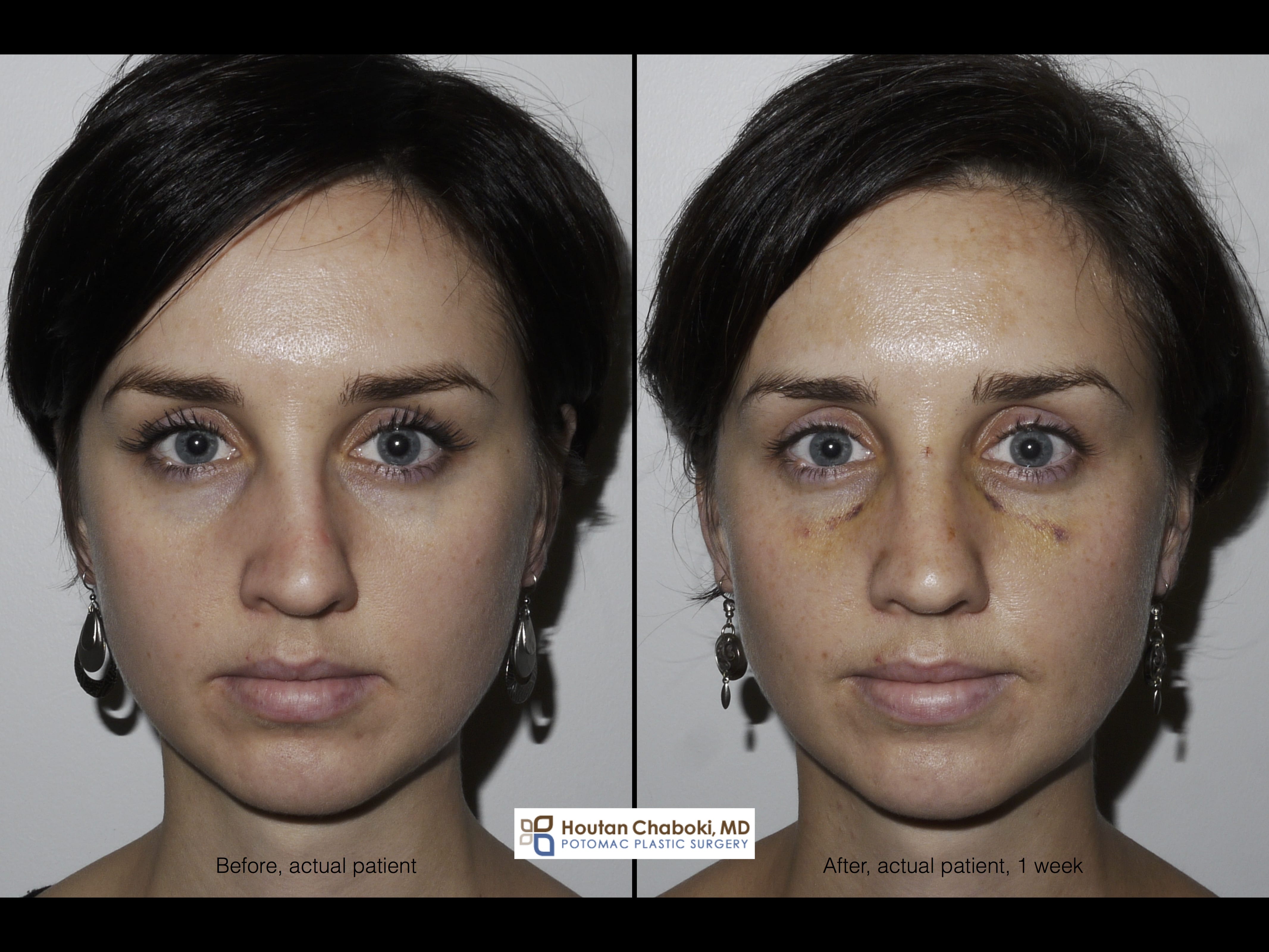Patients have rhinoplasty and septoplasty for many reasons. Improving both the appearance of the nose and breathing passages are the most common reasons. We’ve reviewed septoplasty previously, which is often combined with rhinoplasty. The best rhinoplasty surgeons perform both procedures routinely to maximize the function of the nose and sinuses, in addition to making a better looking nose.

CT scan sinus showing deviated septum with bone spur and chronic sinusitis before rhinoplasty.
Dr. Chaboki, a board certified facial plastic surgeon, treated the following Washington DC rhinoplasty patient recently. The patient had prolonged, obstructed breathing that did not respond to allergy treatments, such as antihistamines, saline sprays, or steroid medications. Consultation with Dr. Chaboki revealed a significant deviated nasal septum with a large bone spur. In addition, the patient had blocked sinuses due to the severe septal deviation.
This particular patient had developed this bone spur naturally without prior trauma. While a deviated septum or twisted nose can occur with broken noses, a bone spur can occur on its own too.
Cosmetic rhinoplasty helped straighten the nose and reduce a bump, in conjunction with septoplasty, turbinate reduction, and endoscopic sinus surgery to open the nasal passages. The procedure takes approximately two hours when performed by specialist surgeons. These types of rhinoplasty cases require osteotomy with bone reshaping, given the significant deviated nose and large bone spur. She had a closed rhinoplasty, thus avoiding external scars. Dr. Chaboki specializes in closed rhinoplasty and septoplasty to help achieve natural results.



Leave a Reply